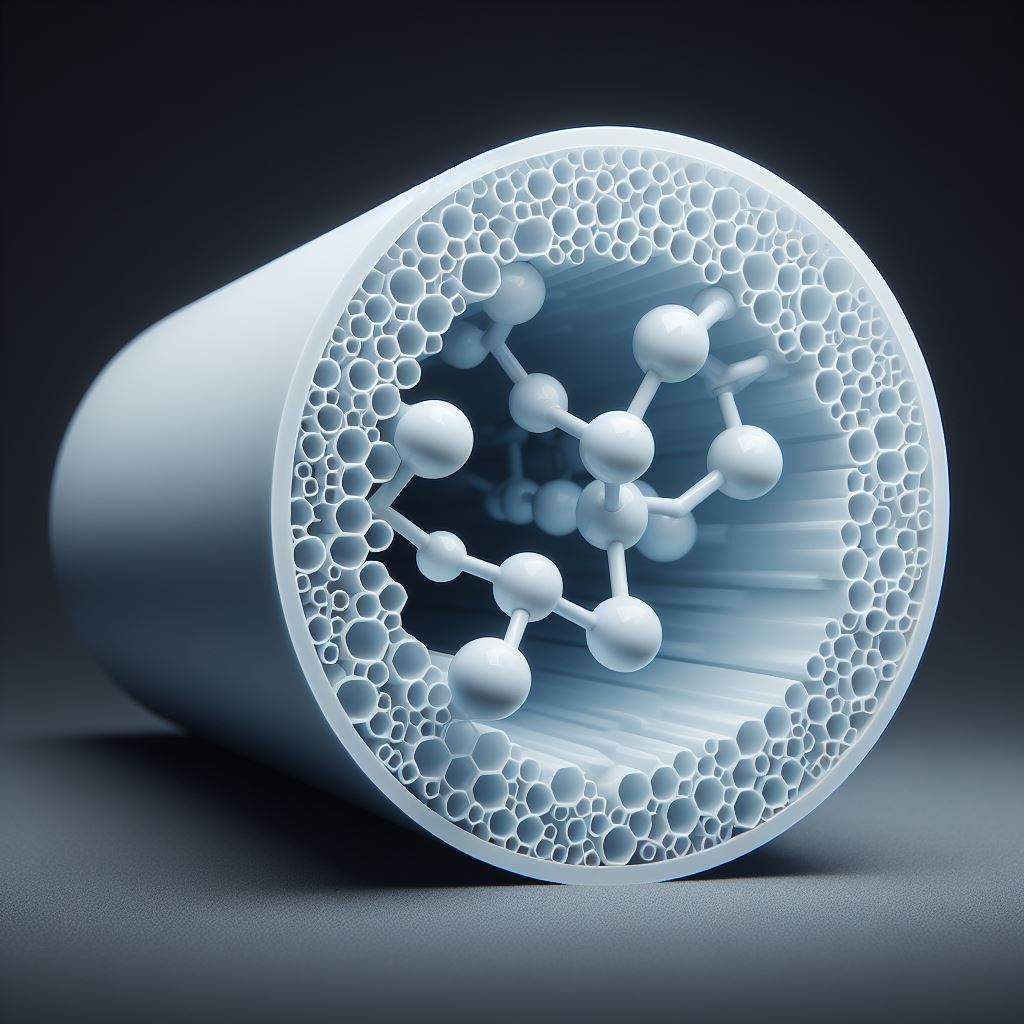Unplasticised Polyvinyl Chloride (uPVC) is a form of plastic you likely encounter every day. It’s a common material in construction, plumbing, and even some household items. But what exactly is uPVC, and what properties make it so widely used? This blog dives into the world of uPVC, exploring its characteristics, applications, and some of the considerations surrounding its use.
Understanding Unplasticised Polyvinyl Chloride uPVC: The Science Behind the Material
uPVC belongs to the polyvinyl chloride (PVC) family. PVC itself is a synthetic plastic ranking as the third-most produced globally [1]. Unplasticised refers to the absence of specific additives called plasticizers. These additives enhance flexibility in PVC, making it softer and more bendable. uPVC, lacking these plasticizers, stands out for its rigidity and sturdiness.
Here’s a breakdown of Unplasticised Polyvinyl Chloride key characteristics:
- Strong and Stiff: uPVC boasts impressive strength and stiffness, making it suitable for load-bearing applications like pipes and window frames.
- Durable: It offers excellent resistance to weathering, corrosion, and chemicals, ensuring a long lifespan without cracking or rotting. This makes it ideal for applications exposed to harsh elements, like outdoor furniture or pipes underground.
- Lightweight: uPVC is lighter than many traditional building materials like wood or metal, simplifying installation and reducing strain during construction.
- Flame Retardant: Inherent flame retardant properties make uPVC a safer choice in building materials, reducing fire hazards in homes and buildings.
- Low Maintenance: uPVC requires minimal upkeep compared to materials like wood that need regular painting or sealing to maintain their appearance and functionality. This translates to lower lifetime costs.

Applications of Unplasticised Polyvinyl Chloride: Where You’ll Find It
uPVC’s unique blend of properties translates to a vast array of applications. Here are some of the most common:
- Construction: uPVC pipes and window frames are popular choices due to their durability, affordability, and weather resistance. Windows made from uPVC can also improve a building’s energy efficiency.
- Plumbing: Drainage systems, waste pipes, and even some potable water pipes can be made from uPVC. Its light weight and ease of installation make it a popular choice for plumbers.
- Flooring: uPVC floorings offer a water-resistant and easy-to-maintain option for various spaces, particularly high-moisture areas like kitchens and bathrooms.
- Fencing and Decking: uPVC fences and decks provide a long-lasting and low-maintenance alternative to traditional wood. They are also resistant to rot and insect damage, unlike wood.
- Cable Insulation: uPVC’s electrical insulation properties make it suitable for electrical cable sheathing, protecting wires from damage and ensuring electrical safety.
Considerations with Unplasticised Polyvinyl Chloride: A Balanced Approach
While uPVC offers numerous advantages, it’s essential to consider some aspects to make informed decisions about its use:
- Temperature Sensitivity: uPVC can become brittle at very low temperatures. In regions with extremely cold winters, this can be a limitation. However, for most climates, uPVC performs well.
- Environmental Impact: The production process for uPVC can raise environmental concerns, as with many plastics. Choosing uPVC products from manufacturers committed to sustainable practices and recycling programs can help mitigate this impact.
- Disposal: Improper disposal of uPVC can contribute to landfill waste. Recycling programs for uPVC are becoming increasingly available, and responsible disposal methods are essential to minimize environmental impact.
Conclusion: Unplasticised Polyvinyl Chloride uPVC: A Versatile Material with Considerations
Unplasticised Polyvinyl Chloride uPVC is a versatile and cost-effective material that offers a plethora of benefits. Its strength, durability, and low maintenance make it a popular choice across various industries. However, it’s important to be mindful of its temperature limitations and environmental considerations. Responsible sourcing, use, and disposal are key to maximizing the benefits of uPVC while minimizing its environmental impact. By making informed choices, we can ensure uPVC continues to play a valuable role in the construction and various applications for years to come.
Trusted PVC Resin Suppliers – Safe Climber Overseas Pvt. Ltd.





